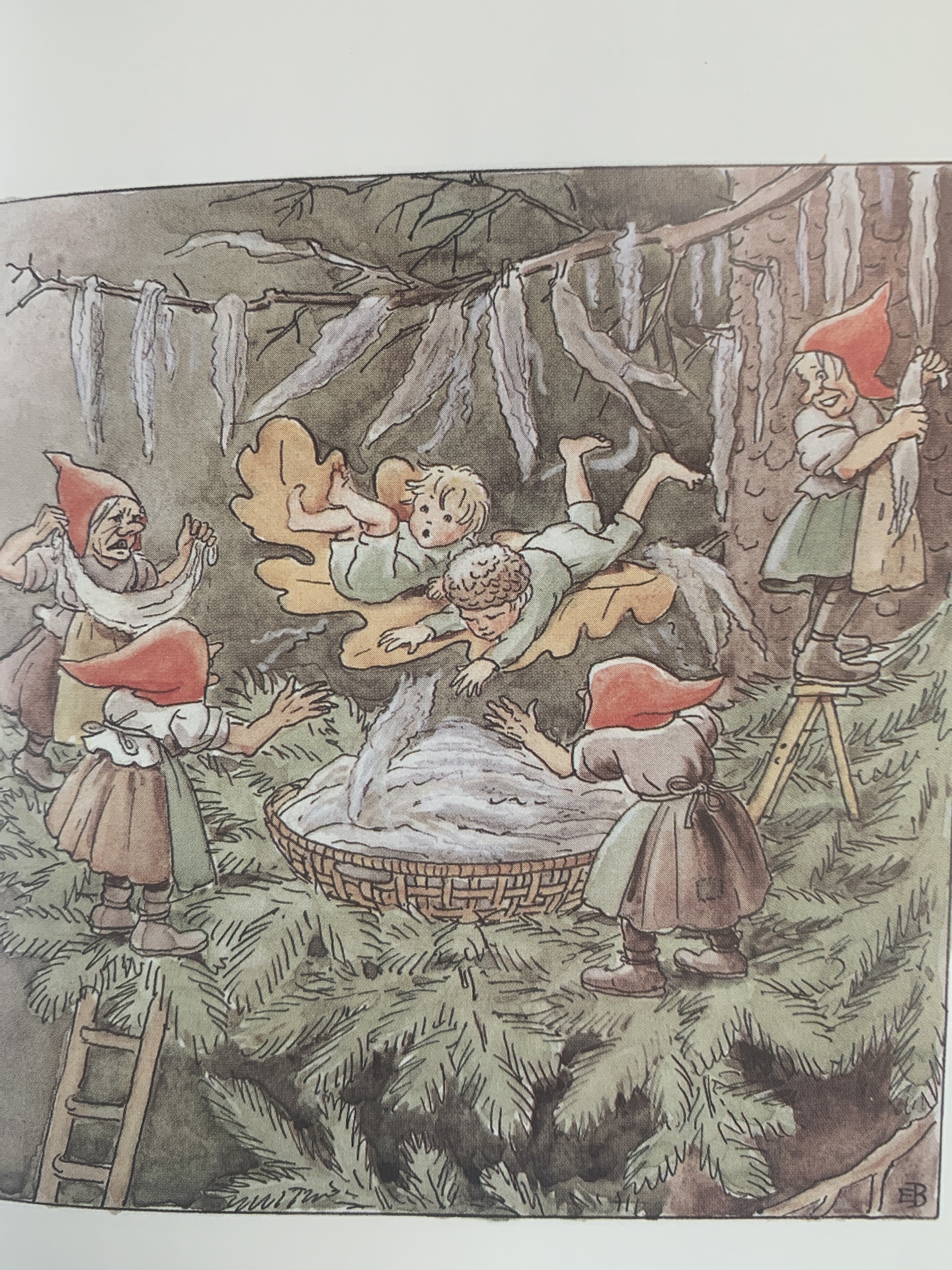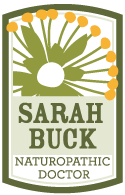Usnea species

From Elsa Beskow’s “Woody, Hazel and Little Pip”
Usnea barbata is a lichen that tends to grow on tree branches, often of coniferous trees, but in some locations can be found on apple trees and other species. It has the appearance of a beard, with many fine rounded branches, hence the moniker barbata. It is a light green-grey, somewhat sea-foamy color. To positively identify it, you can scrape away the outer green-grey part and find fine white threads within the thicker branches of the “beard” structure. There are few poisonous lichens, and most of them are orange in color, so you aren’t at risk of using the wrong lichen if you are using a a greyish one.
I’ve made a few small videos for help identifying, find them on Instagram @sarahbucknd
Lichen is special because it is a symbiotic organism, though it is classified as a fungus it’s actually algae (or cyanobacteria depending on the species) and fungus that help each other out and make a colony that on the macro scale you’d recognize as a lichen! (Annie Algae took a lichen to Freddie Fungi is a silly little science rhyme to remember that tidbit). It contains several acids, the most well-researched is usnic acid, that are antimicrobial against gram positive bacteria such as Staphylococcus aureus, the bacteria responsible for MRSA and impetigo, Streptococcus species, including the species mutans that is the main culprit for causing cavities in teeth. Usnic acid has also been studied for its usefulness in breaking up biofilms, the protective sheets mucilage where bacteria can hide and reproduce, away from the reach of the human immune system. In addition, researchers have found it to be antiviral, antiprotozoal, antiproliferative, anti-inflammatory and analgesic. Especially apropos right now is the use of usnic acid as an antiviral, the proposed mechanism of action is against RNA transcription, a process that eventually leads to the export of more viral RNA.
Traditionally Usnea has been used as a lung and urinary tract-specific remedy (mucous membranes). I suspect that it works so well in the mucus membranes is because it is a bioifilm disruptor and the mucus membranes tend to be susceptible to biofilm formation (think sinuses, urinary bladder, teeth/gums). There are even current studies looking into the usefulness of using usnic acid on medical devices to arrest biofilm production on the devices such as catheters, which are responsible for many secondary infections in hospitals.
Christopher Hobbes has a wonderful booklet on the uses of lichens that can be found here: https://www.christopherhobbs.com/wp-website/wp-content/uploads/2015/01/Usnea-booklet-text.pdf
Dosing:
Usnic acid can be toxic to the liver, but it would take a LOT of usnic acid used over a long period of time to create this effect. But for safety’s sake, it’s best to start with low doses 1-5 mL tincture 3x daily, diluted in water, and taken for 3 weeks at a time and give a week off.
Making medicine with lichens:
To make medicine, it is best to extract with alcohol, and some like a hot ethanol extraction, which is fancy lingo for tincturing in the lichen in ethanol and placing the container in a warm water bath for a few days. If you choose this route, make sure to burp the container or you could get an explosion!
Some people like to get the most out of their extractions and will extract (decoct) in water first, then use the same herb mark and extract that again in ethanol, then combine the water and the ethanol menstruums (1:1 ratio) and capture a larger spectrum of medicinal compounds.
REMEMBER! I am a doctor, but I am not YOUR doctor, so ask your doctor before beginning any new herbal medications. This material is intended for educational and entertainment purposes only. It may not be used to diagnose or treat any disease.

I am in Southern Maine and am trying to be certain I am gathering Usnea. Some are soft light green small tufts I find on the ground or cloning to a small branch that has fallen after a windy day.
Some are harder still in the same area as the softer thinner ones. The harder ones are a bit thicker yet are on the same branch types.
Is only one Usnea?
Hi Janet,
I cannot say for sure without seeing a picture of what you describe. I pick up windfall usnea that is in hairy tufts. If they are still attached to a branch, they will be attached by one point. Usnea never appears flat and crusty on a branch. The hairs should be round, not flat. If you pull on the hairs and they are slightly elastic and if you peel back the greenish layer on a hair and reveal a white core, it’s very likely you have usnea. Usnea color is a very pale greenish blue. If you are not sure, don’t use it! If you are determined to try it, but feel nervous, contact a local herbalist who offers plant walks and join them for some in-person instruction on identification. I hope that helps. Enjoy your spring woods walks!
Usnea barbata is not native to North America.
Hi David, I’m curious what prompted your comment. If you would like to share where it is native to, I’d be interested in learning that. Thanks for engaging.
Does usnea longissima (old man’s beard) grow in maine?
Hi Kelly, I have heard that Usnea longissima can be found in Maine, but it is more common on the West Coast.